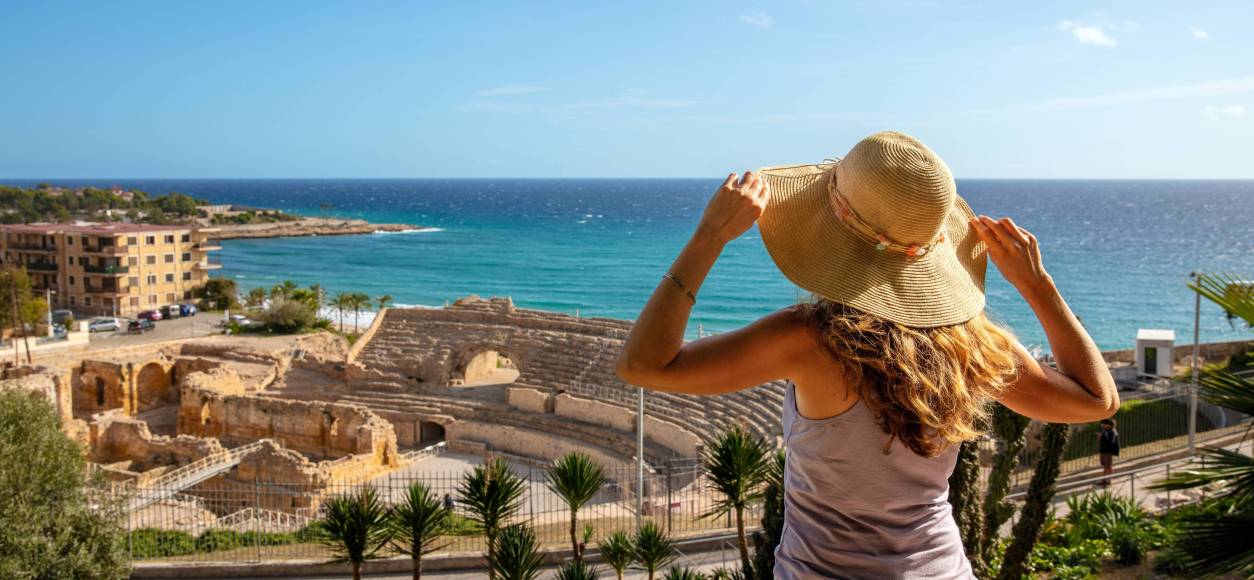Tarragona is one of the oldest cities in Catalonia, a jewel located on the Costa Daurada and bathed by the Mediterranean sea. A city with great cultural heritage, a rich Roman legacy declared a World Heritage Site by UNESCO and a coastline of calm and crystal-clear waters. A must-see tourist destination. Are you ready to discover it? Here are the main tourist attractions in the city of Tarragona, everything you need to know to explore one of the most historic cities in the country.
El Serrallo
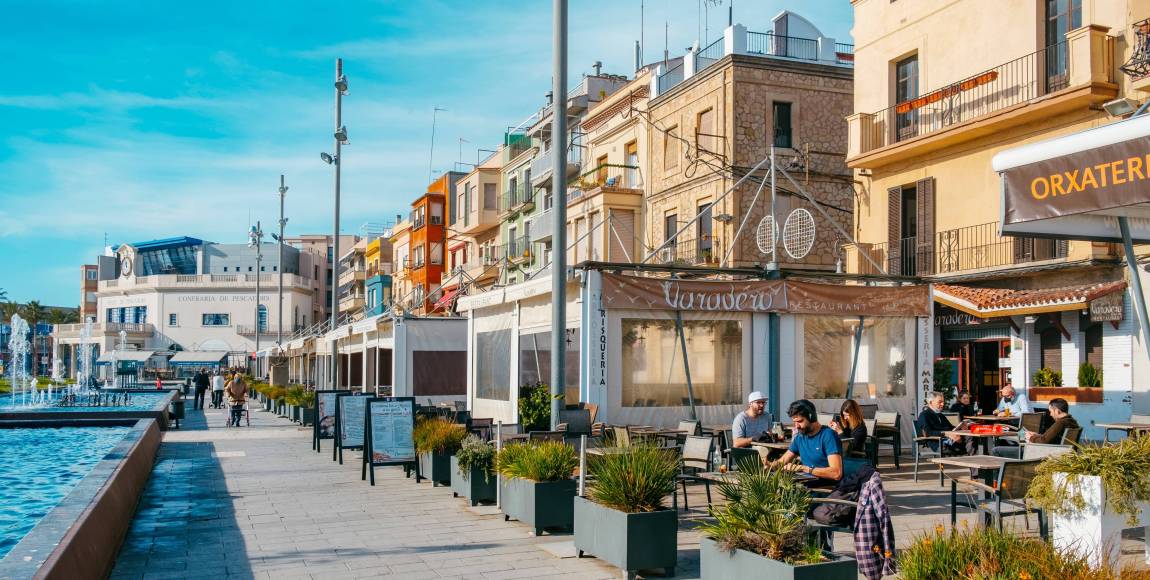
Our route begins in El Serrallo, one of the city's most emblematic neighborhoods and a living witness to Tarragona's long fishing tradition. Located next to the port, El Serrallo preserves the essence of the old fishing villages, with quiet, narrow streets, colorful houses, and, above all, an atmosphere that transports you to another time. One of the most authentic experiences you can have while walking through the neighborhood is watching the fishing boats return at the end of the day, unloading the fresh fish that will be auctioned at the fish market. Before leaving, we recommend you visit one of its restaurants to enjoy a traditional Catalan seafood dish, such as "romesco casserole," a typical Tarragona fish stew. It's finger-licking good!
Roman Circus
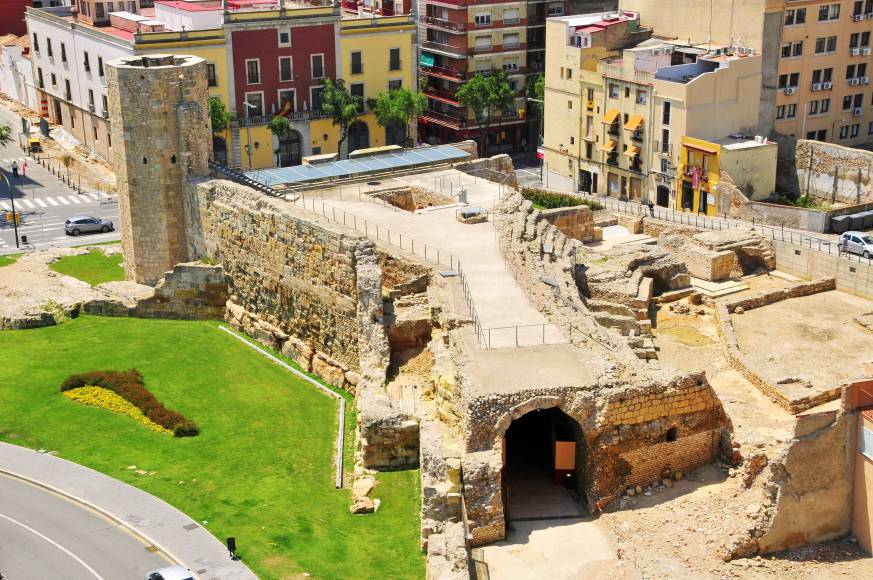
The Roman Circus of Tarragona is one of the city's most important archaeological treasures and one of the best-preserved circuses in ancient Hispania. Built in the 1st century AD during the reign of Emperor Domitian, this circus was used to host the spectacular chariot races, one of the most popular entertainments in ancient Rome, and it is estimated to have had a capacity of 30,000 spectators. Today, it is part of the archaeological ensemble of Tarraco, declared a UNESCO World Heritage Site in 2000. One of the most impressive features of the circus is its excellent state of preservation, despite being partially buried under modern buildings. You can still see sections of the walls, the underground vaults that provided access to the stands, and some parts of the grandstands. The circus is also connected by underground passages to the Praetorium, a tower that housed the stairs leading from the lower city to the provincial forum, and which, in the 16th century, was transformed into a palace for the kings of the Crown of Aragon. In short, a must-see.
Roman Amphitheater
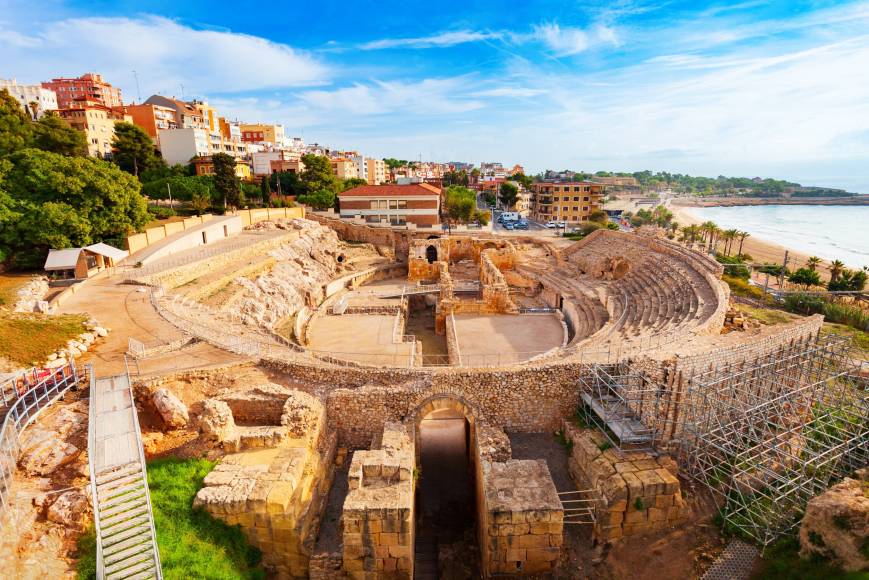
Tarragona's Roman amphitheater is, perhaps, the city's most iconic image: an impressive monument located by the sea, offering spectacular views of the Mediterranean. In this space, built in the early 2nd century AD, gladiatorial combats, wild animal fights, and public executions took place, attracting thousands of spectators from ancient Tarraco. Despite the passage of time and erosion, significant parts of the northern seating area remain today, though heavily worn by proximity to the sea, as well as a portion of the southern seating area, allowing visitors to grasp the grandiosity of this space. The amphitheater could seat around 14,000 spectators. In the 6th century, after the fall of the Roman Empire, a Visigothic basilica was built on the site, and later, a medieval church. These successive layers of history make the amphitheater a key site for understanding not only Roman Tarragona but also the city's later development.
The Cathedral of Tarragona
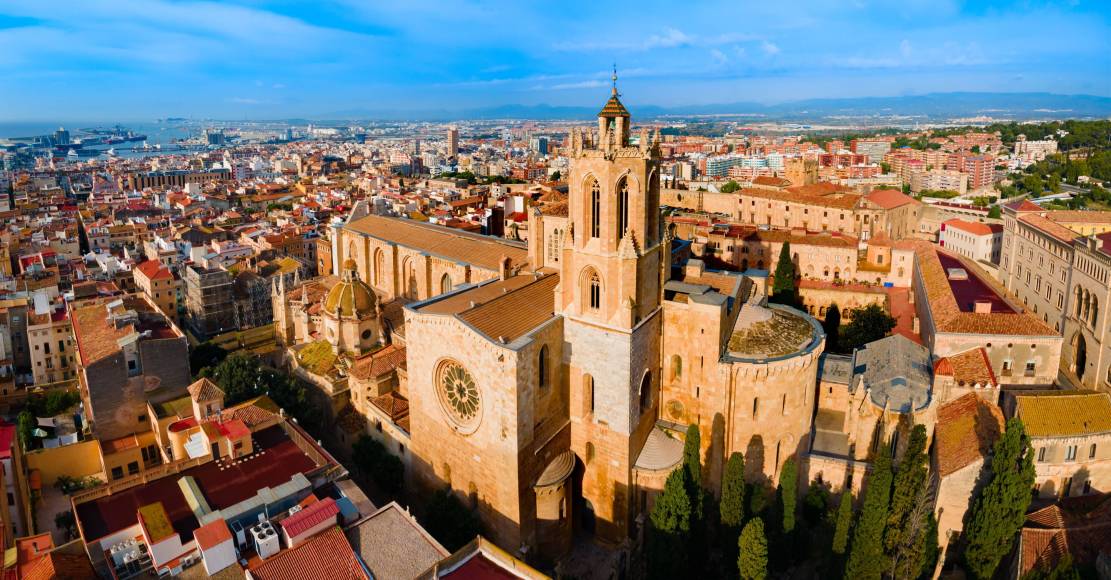
The Cathedral of Tarragona, dedicated to Saint Thecla and located at the highest point of the hill, is one of the city's most emblematic buildings and one of its greatest architectural treasures. This monumental temple contains the richest collection of medieval art in Tarragona, standing out both for its artistic value and its historical symbolism. Construction began in the mid-12th century and was consecrated in 1331, making it a fine example of transitional architecture from Romanesque to Gothic. It is a basilica-style temple with three naves and a transept, featuring an imposing Gothic façade crowned by a large rose window. Inside, you can admire several elements of great artistic value, such as the main altarpiece, dedicated to Saint Thecla, and the numerous chapels housing medieval and Renaissance artworks. The cloister, one of the most impressive gems of the building, is also worth a visit.
Mediterranean Balcony
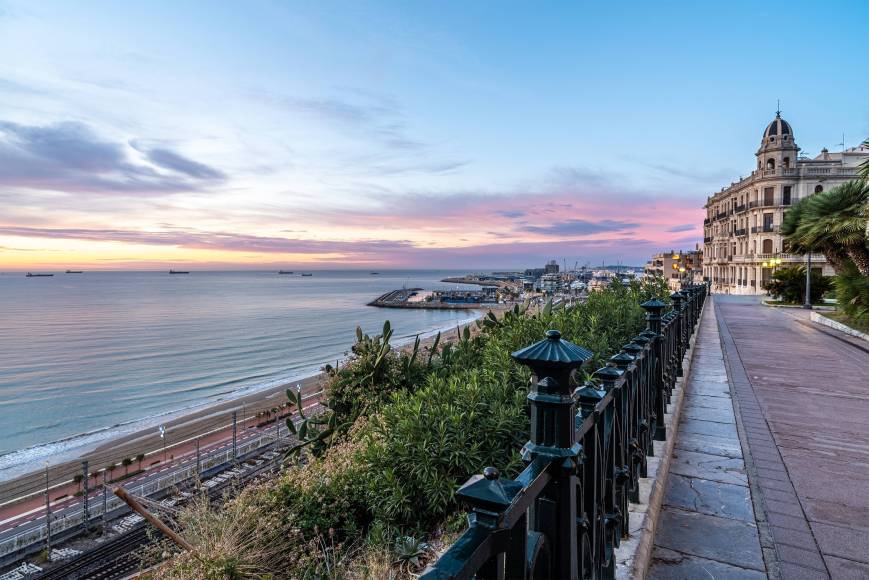
For the people of Tarragona, it is almost a tradition to stroll along the Rambla Nova until they reach the Mediterranean Balcony, where it is customary to "touch iron" at its iconic railing, designed by Ramón Salas and Ricomà in 1889. From this viewpoint, located about 40 meters above the sea, you can enjoy one of the best panoramic views of the Tarragona coastline. The name "Mediterranean Balcony" was given by Emilio Castelar, president of the Executive Power during the First Spanish Republic, who named it so during his visit to Tarragona in 1863.
Tarragona's Beaches
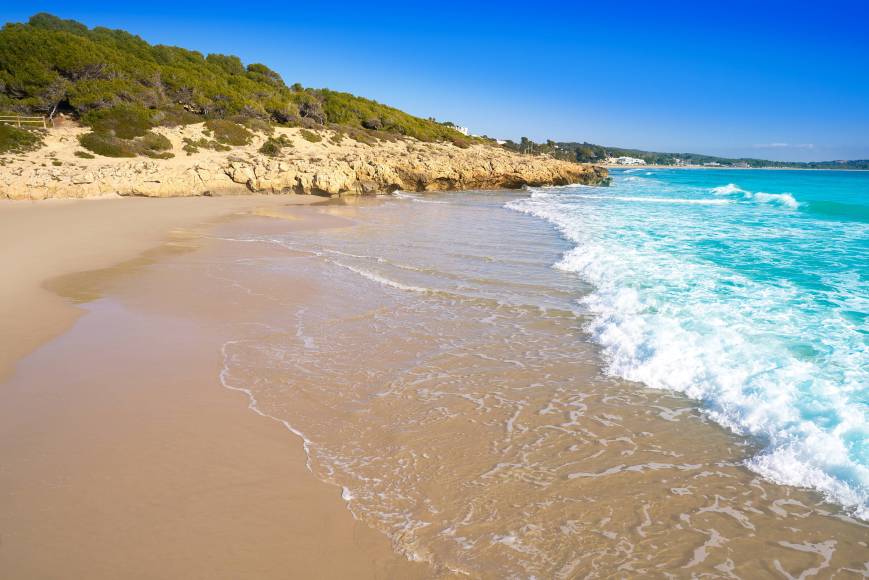
They are another major attraction of the city. Tarragona's beaches are characterized by very fine, golden sand, which gave the Costa Daurada (golden coast) its name. Among the most beautiful are the Playa del Arboçar, better known as Cala Fonda or Waikiki, Cala Jovera, and Playa dels Capellans, among other wonders. Here you'll find what we consider the best beaches on the Costa Daurada.
Castellers Performances
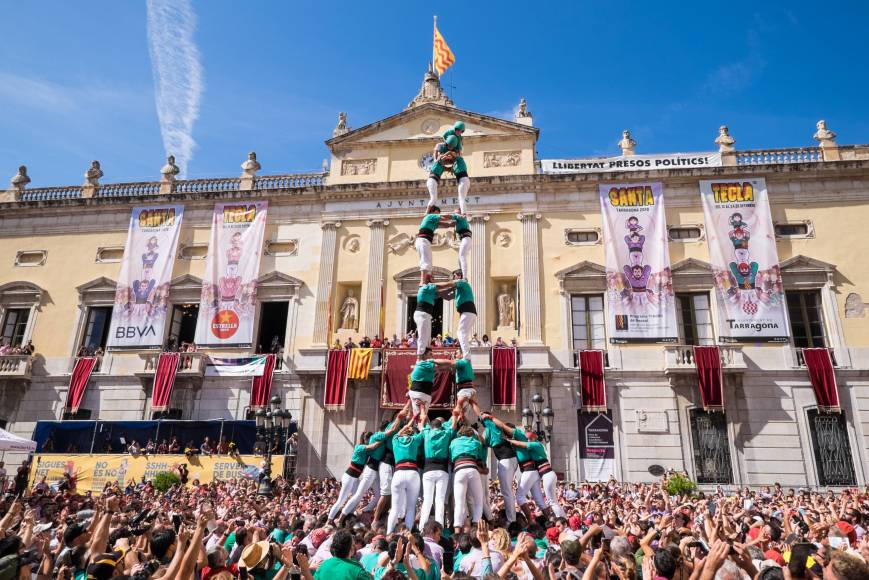
We couldn't end our tour of Tarragona's main attractions without highlighting the castellers performances, one of the city's most emblematic and beloved traditions. The "castells," recognized as Intangible Cultural Heritage of Humanity by UNESCO in 2010, are human towers formed by several people who, organized into different levels, build structures up to ten stories high. An activity that combines strength, balance, bravery, and common sense. In Tarragona, the casteller performances are especially significant during the Festes de Santa Tecla, the city's main festival, which takes place in September. During these festivities, the city's main casteller groups — such as the Xiquets de Tarragona, the Colla Jove Xiquets de Tarragona, the Xiquets del Serrallo, and the Castellers de Sant Pere i Sant Pau — compete and collaborate to build the best human towers in a festive and exciting atmosphere.
In short, Tarragona is a city that combines history, culture, leisure, and sea in a unique way. From the Roman legacy, to the fishing tradition of El Serrallo, the imposing Cathedral, or the spectacular views from the Mediterranean Balcony. A city to live, enjoy, and, above all, discover.
Tarragona's tourist map
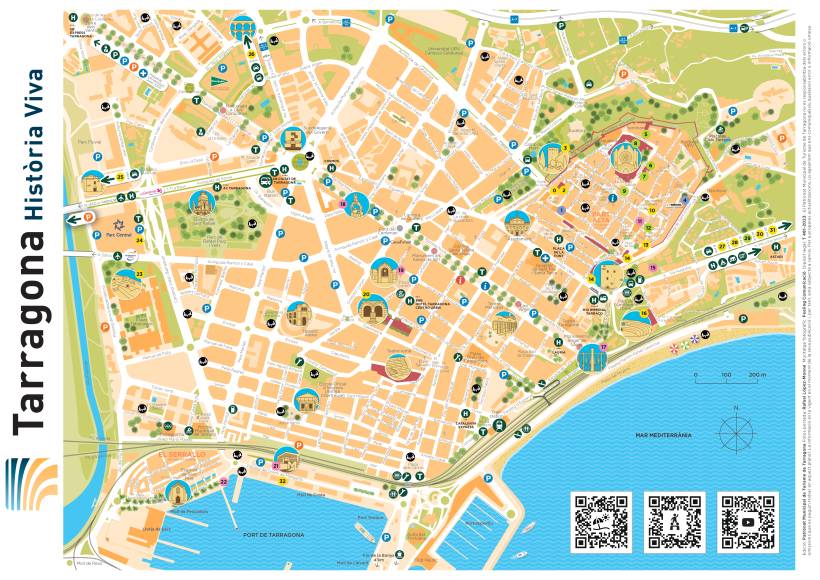
If after visiting the city of Tarragona you are eager to explore the area further, here are 10 suggestions to discover the province of Tarragona.
 Log in to your account
Log in to your account